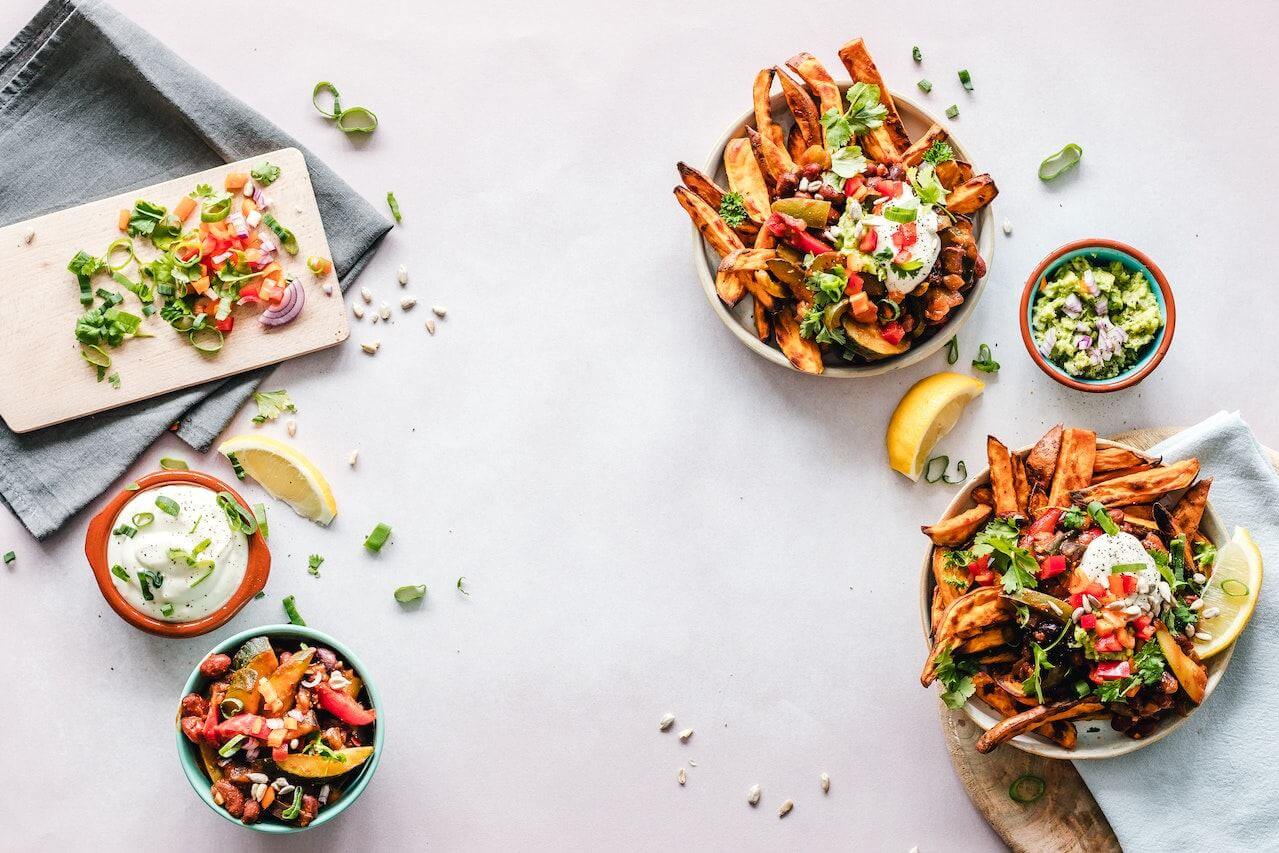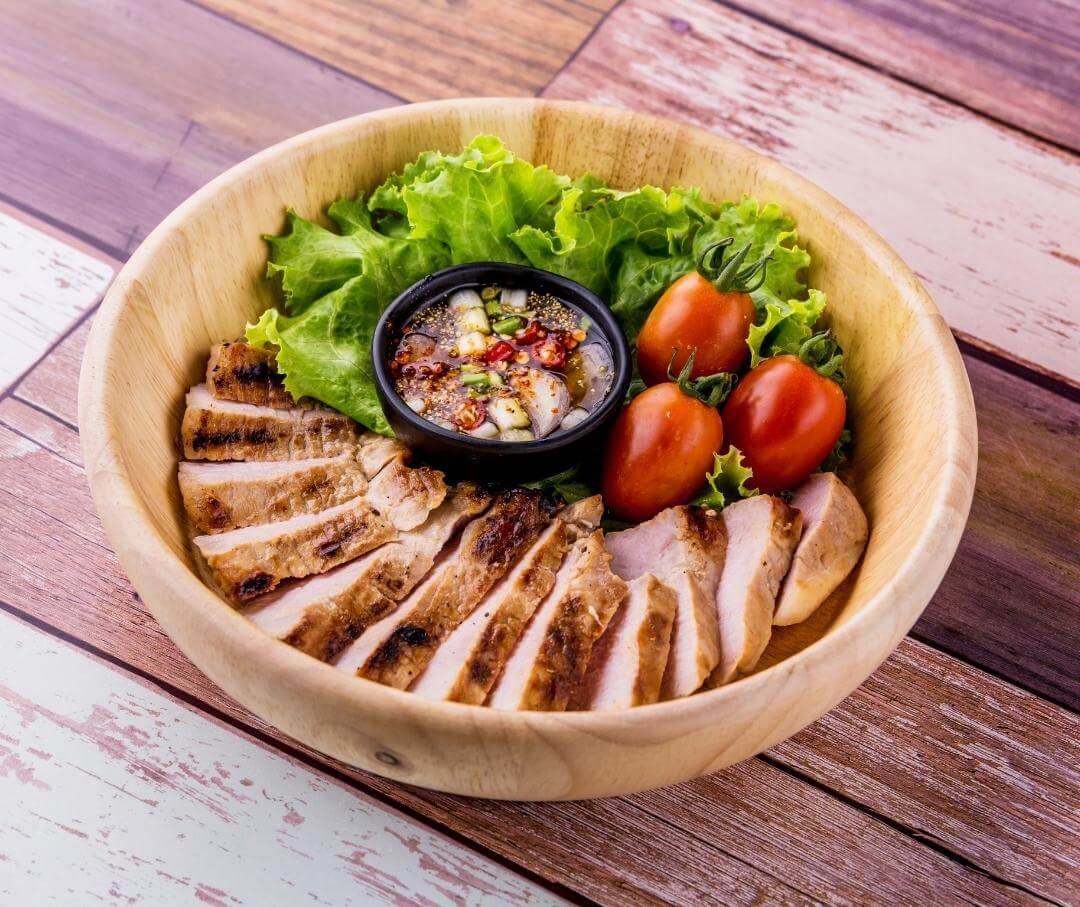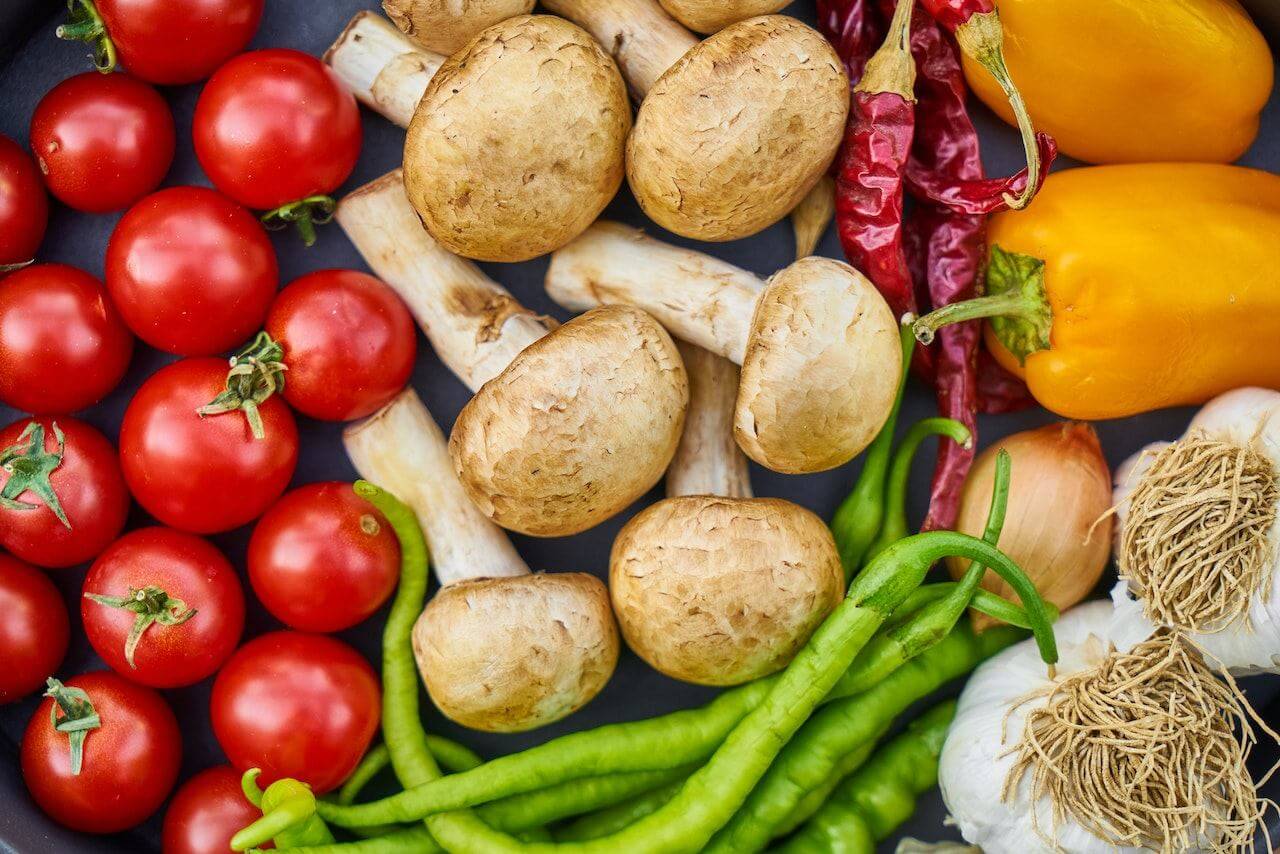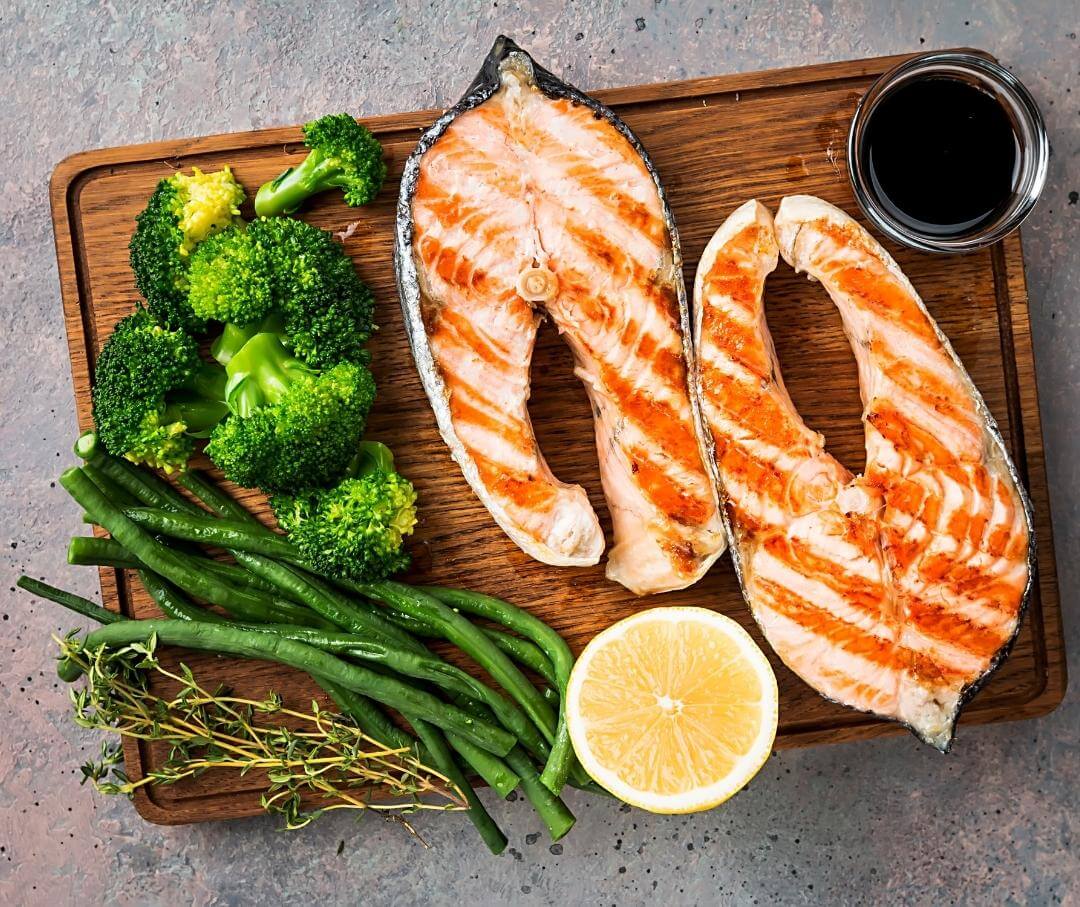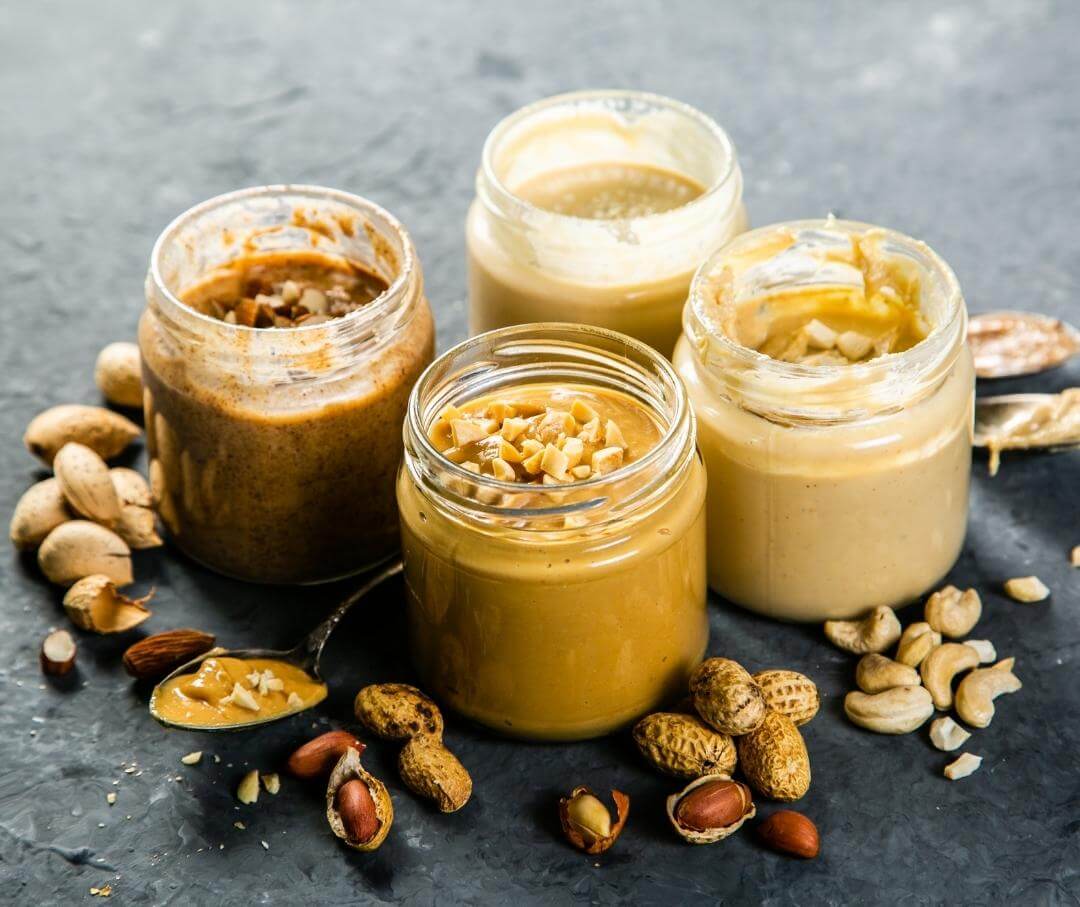In this article we’ll dive into why turkey can be helpful for your metabolic health, how it may help with weight loss, some of the key differences between turkey and ground beef, and finish up with a delicious tostada recipe for dinner.
Why Turkey Is a Good Choice for Dinner
When looking for a lean protein for dinner, poultry is often recommended over red meat. While chicken is the more common poultry choice, turkey has a lot to offer.
Turkey and chicken are comparable in protein, fat, and cholesterol content making them both a good choice for metabolic health. Turkey slightly edges out its cousin as it is slightly higher in some amino acids, B vitamins, and minerals.
The 2021 American Heart Association Scientific Statement on Dietary Guidance to Improve Cardiovascular Health recommends choosing healthy protein sources, including lean cuts of poultry.1
The DASH diet which helps support healthy blood pressure recommends poultry as one of the primary protein sources.
In a prospective study of over 400,000 individuals, red and processed meat was associated with a higher risk for heart disease, and substituting the food with leaner proteins like poultry and fish may help reduce that risk.2
What’s the Difference Between Ground Turkey and Ground Beef?
Compared to beef, turkey is a great option for metabolic health. Yes, it does depend a bit on the cut of beef and part of the turkey used, however, turkey tends to be lower in fat and cholesterol and richer in a number of vitamins and minerals.
To simplify things we’ll compare ground beef to ground turkey. You can find both in most grocery stores with varying fat contents. The most commonly available for both types of meat are 85% lean and 93% lean. In most situations, leaner is better regardless of the type of meat.
Let’s dive in and take a look at the differences between ground turkey and ground beef.
Ground Turkey
The amount of turkey we eat has nearly doubled in the last 50 years to about 15 pounds of turkey per person, per year.3According to the National Turkey Federation, the increase in consumption is largely due to consumers using ground turkey as a replacement for ground beef.4
Ground turkey is made mostly from the thigh and drumstick with some white meat mixed in. 93% lean ground turkey is the most popular type of ground turkey in the US.
A cooked 3-ounce portion of 93% lean ground turkey has about 180 calories, 10g of fat, 2.5g of saturated fat, 90mg of cholesterol, and 23g of protein. It’s an excellent source of vitamin B12 (67%), vitamin B6 (42%), niacin (43%), and selenium (44%).5
Turkey is also higher in most essential amino acids than ground beef but especially lysine, tryptophan, and histidine as well as unsaturated fats, especially polyunsaturated fat, a type of fat that has been shown to help reduce LDL, or bad, cholesterol levels.
One of the best characteristics of turkey is its relatively bland flavor. This may seem counterintuitive, but that makes it a good choice for using in heavily seasoned dishes because it really pulls in the flavors of the other food without overpowering it.
When cooking ground turkey be sure to cook it to 165°F.

Ground Beef
There are numerous options for ground beef at most grocery stores. You can find it from 80% lean (meaning 20% is fat) up to 95% lean (meaning 5% is fat).
Typically, if the ground beef is labeled “ground chuck” it is 80% lean meat and comes from a fattier part of the cow, the shoulder area. If it is labeled “ground sirloin” it is a lower fat type of ground meat, usually around 95% lean.
If you can find lower fat content ground beef, isn’t it okay as well?
Sure, ground beef that is between 93% and 95% lean can also be a good lean protein choice. Because it is lower in fat it does tend to dry out more when cooked at high temperatures and isn’t as tender as higher fat cuts or even ground turkey.
From a nutritional perspective, ground beef and ground turkey are similar. A cooked 3-ounce portion of 93% lean ground beef is also about 180 calories, 8g of fat, 3.5g of saturated fat, 76mg of cholesterol, and 24.5g of protein.6
Ground beef is a bit lower in Niacin (38%), vitamin B6 (21%), and selenium (33%) but higher in vitamin B12 (100%) and iron (15%) than ground turkey.
Cook all ground beef to an internal temperature of 160°F.
{{mid-cta}}
Benefits of Ground Turkey for Dinner
We mentioned early on that turkey is higher in many essential amino acids than some other lean protein choices. The biggest difference is in its tryptophan content. Yes, the amino acid that is usually attributed to the post-Thanksgiving dinner crash.
Does eating turkey really make you sleepy? Yes and no. Yes, tryptophan does work in your brain to release cortisol which helps relax you, but that alone doesn’t cause the “crash.” And the benefits of eating turkey go way beyond its tryptophan content.
Because turkey is rich in lean protein it helps fill you up and keep you satisfied. When you add it to whole grains, fruits and vegetables you have a meal that will keep your blood sugar stable.
<p class="pro-tip"><strong>Learn more about </strong> <a href="/blog/protein-for-weight-loss">why protein can help you lose weight</a>.</p>
A number of studies have also shown that eating more poultry in place of red and processed meats reduces the risk of cardiovascular disease, hypertension, and diabetes and may help with weight loss.7 A large study, the Nurses Health Study, found a 19% reduced risk of heart disease with one serving of poultry a day compared to a serving of red meat.8
The International Lipid Expert Panel recently recommended substituting poultry along with seafood and non-animal protein choices to support metabolic health.9
Other than using ground turkey in a burger, what else can you do with it? Because it picks up the flavors of the spices and other foods you are cooking it in, it is perfect to replace ground beef in highly seasoned foods like tacos, spaghetti sauce, or stuffed peppers.
Here’s an easy turkey tostada recipe that makes an easy dinner. You can double this and freeze the extra meat to use for tacos or on a salad down the road.
Smokey Turkey Tostadas Recipe
Think of a tostada as a cross between a taco and salad. The crispy corn tortilla is a crunchy base, piled high with shredded lettuce and topped with spicy ground turkey and pico de gallo on the top. Serve it with sliced avocado and some grated cheese if desired.
Ingredients:
- 1 tsp. grapeseed oil
- ½ cup diced yellow onion
- 1 lb. 93% lean ground turkey
- 1 tsp. ground cumin
- ½ tsp. chili powder
- ½ tsp. Mexican oregano
- ¼ tsp. garlic powder
- ¼ tsp. onion powder
- 1 tbsp. chopped chipotle pepper in adobo sauce
- ½ tsp. Kosher salt
- 8 small corn tortillas (6-inch)
- 1 tsp. grapeseed oil
- 2 cups shredded romaine lettuce
- 1 cup pico de gallo
- Grated jack cheese, optional
- Sliced avocado, optional
Directions:
- In a large skillet, heat grapeseed oil over medium heat. Add the onion and saute for 3 minutes, until it becomes translucent.
- Crumble the turkey into the pan with the onions. Sprinkle with the spices and chipotle pepper stirring to combine everything well. Cook until the meat browns and is cooked through.
- Remove the meat from the pan and cover to keep warm. Wipe out the skillet and heat the remaining grapeseed oil in the pan over medium-high heat. When the oil is hot, add 1 tortilla at a time and cook until crispy, turn over and cook until crisp, about 1 minute. Repeat with the other tortillas, adding a little more oil if needed.
- Place 2 tortillas on each plate. Top each with ¼ cup of lettuce and divide the ground turkey among them. Top with pico de gallo, sliced avocado, and cheese if desired.
Nutritional Information: (not including avocado and cheese)
Calories: 420, Fat: 18g, Saturated Fat: 3.5g, Cholesterol: 120mg, Sodium: 680mg, Carbohydrates: 34g, Fiber: 1g, Sugars:6g, Protein: 34g, Vitamin D: 0mcg, Calcium: 60mg, Iron: 2mg, Potassium: 390mg
<p class="pro-tip"><strong>Explore these </strong> <a href="/blog/thanksgiving-recipes-low-glycemic">low-glycemic Thanksgiving recipes</a> or find more <a href="/blog/5-low-glycemic-dinner-recipes">easy low-glycemic dinner recipes</a>.</p>
- Item 1
- Item 2
- item 3
Topics discussed in this article:
References
- Lichtenstein, A.H., Appel, L.J., Vadiveloo, M., Hu, F.B., Kris-Etherton, P.M., Rebholz, C.M., Sacks, F.M., Thorndike, A.N., Van Horn, L., & Wylie-Rosett, J. (2021) 2021 Dietary Guidance to Improve Cardiovascular Health: A Scientific Statement From the American Heart Association. Circulation, 144(23), e472-e487. https://doi.org/10.1161/CIR.0000000000001031
- Key, T. J., Appleby, P. N., Bradbury, K. E., Sweeting, M., Wood, A., Johansson, I., Kühn, T., Steur, M., Weiderpass, E., Wennberg, M., Lund Würtz, A. M., Agudo, A., Andersson, J., Arriola, L., Boeing, H., Boer, J., Bonnet, F., Boutron-Ruault, M. C., Cross, A. J., Ericson, U., … Danesh, J. (2019). Consumption of Meat, Fish, Dairy Products, and Eggs and Risk of Ischemic Heart Disease. Circulation, 139(25), 2835–2845. https://doi.org/10.1161/CIRCULATIONAHA.118.038813
- United States Department of Agriculture, Economic Research Service. (2022). Poultry Sector at a Glance. Retrieved August 26, 2022, from: https://www.ers.usda.gov/topics/animal-products/poultry-eggs/sector-at-a-glance/
- National Turkey Federation. (n.d.) Turkey by the Numbers. Retrieved August 26, 2022, from: https://www.eatturkey.org/turkeystats/
- United States Department of Agriculture, Agricultural Research Service, FoodData Central. (2018). Turkey, ground, 93% lean, 7% fat, pan-broiled crumbles. Retrieved August 26, 2022, from: https://fdc.nal.usda.gov/fdc-app.html#/food-details/172851/nutrients
- United States Department of Agriculture, Agricultural Research Service, FoodData Central. (2019). Beef, ground, 93% lean, 7% fat, crumbles, cooked, pan-browned. Retrieved August 26, 2022, from: https://fdc.nal.usda.gov/fdc-app.html#/food-details/174755/nutrients
- Zhubi-Bakija, F., Bajraktari, G., Bytyci, I., Mikhailidis, D.P., Henein, M.Y., Latkovskis, G., Rexhaj, Z., Zhubi, E., & Banach, M. (2020). The impact of type of dietary protein, animal versus vegetable, in modifying cardiometabolic risk factors: A position paper from the International Lipid Expert Panel (ILEP). Clinical Nutrition Journal, 40(1), 255-276. https://doi.org/10.1016/j.clnu.2020.05.017
- Bernstein, A. M., Sun, Q., Hu, F. B., Stampfer, M. J., Manson, J. E., & Willett, W. C. (2010). Major dietary protein sources and risk of coronary heart disease in women. Circulation, 122(9), 876–883. https://doi.org/10.1161/CIRCULATIONAHA.109.915165

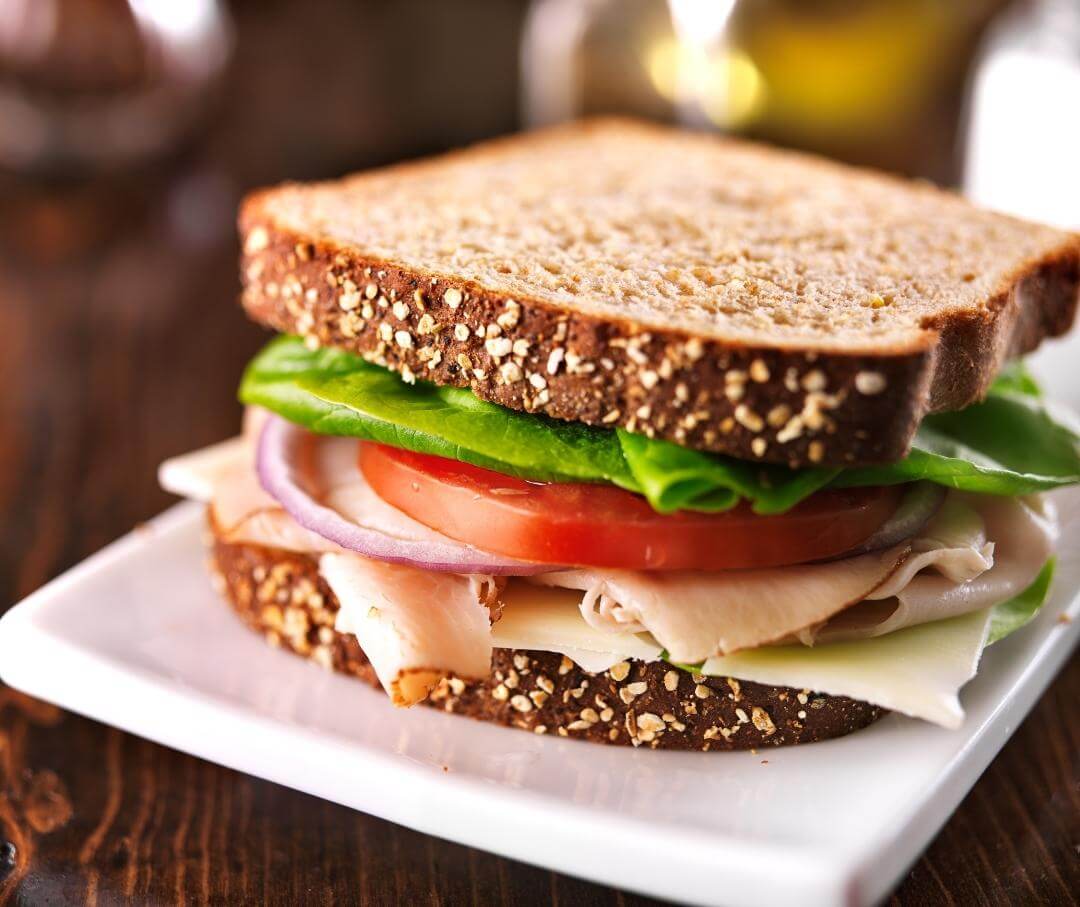
.jpg)

